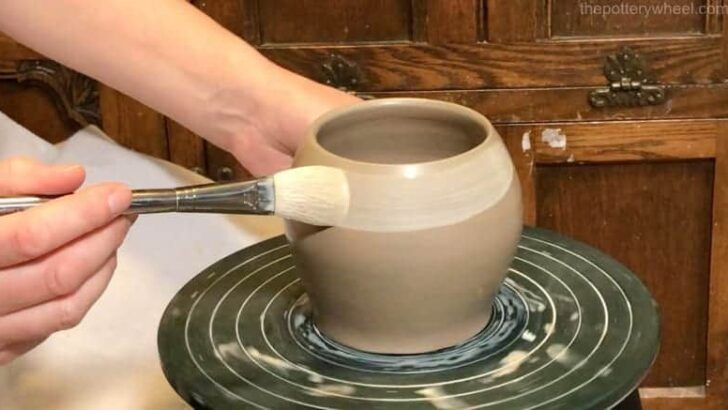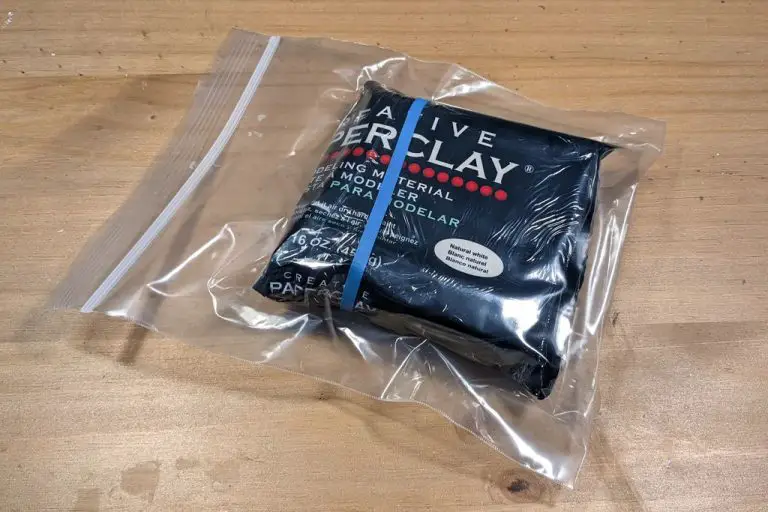Can You Eat Out Of Low Fire Clay?
Low fire clay refers to pottery clay that is fired at lower temperatures, typically between 1,800-2,100°F. At these temperatures, low fire clay does not become vitrified or glass-like. Low fire clays are often used for hand-built pottery, sculpture, and decorations. They are cheaper and easier to work with than high fire clays.
While low fire clays offer benefits in workability and cost, they raise some safety considerations for functional pottery. Low fire clay is more porous and reactive than high fire clay, which can allow chemicals from the clay or glazes to leach into food and drink. The clay body and any glazes must be verified as food-safe before using low fire pottery for eating and drinking.
Lead Safety
Lead levels in low fire clay pottery have been a health concern. Studies show potters regularly working with lead glazes have higher lead levels in their blood compared to the general population (Peralta, 2022). Lead from glazes can leach into food and cause lead poisoning when eaten or drank from over time. Symptoms of lead poisoning include fatigue, headaches, irritability, loss of appetite, memory problems, and reduced IQ in children.
To avoid lead exposure, it’s recommended to use only lead-free glazes rated food safe. Clay bodies low in lead are also preferred. Testing kits can check lead levels in pottery and glazes. For those concerned about lead, choose high fire stoneware and porcelain rated food safe instead of low fire earthenware. Proper firing and glaze fit will also minimize leaching risks. While some claim low fire pottery has been safely used for millennia, lead exposure was likely more common historically.
Cadmium Safety
Cadmium is a toxic metal that was historically used in some ceramic glazes. When cadmium leaches into food and drinks, it can cause health issues like kidney damage, bone loss, and cancer (source).
While modern glazes no longer contain cadmium, some antique or improperly formulated glazes could still leach unsafe levels. It’s important to test any ceramics, especially low-fire earthenware, to ensure they don’t release toxic cadmium into food (source).
Testing involves putting a weak acid like vinegar on the clay and glaze for 24 hours, then testing the acid solution for the presence of cadmium. Specialized labs can also test ceramic leachates. Avoid using ceramics that fail these toxicity tests for food purposes.
Other Toxins
Clays, especially imported clays, can contain toxic heavy metals such as arsenic, mercury, and lead. Arsenic can be naturally present in clays and can leach into food when acidic foods contact the clay (Princeton). Mercury exposure mainly comes from firing clays, but some clays have naturally occurring mercury that can also leach into food. According to South Texas College, leaded glazes and frits, as well as cobalt and copper oxides, can release toxins, especially when fired improperly.
Firing clays can also release harmful silica dust, which is why proper ventilation is critical (South Texas College). Silica dust is known to cause silicosis when inhaled over time. Other potential toxins to be aware of are cadmium, chromium, nickel, barium, asbestos, fluorine, lithium, manganese, zinc, and uranium, which may be present in certain clays, glazes or kilns (Princeton).
Acidic Foods
Acidic foods and beverages such as lemon juice, tomato sauce, vinegar and wine can react with the minerals in low fire clay, causing the clay to deteriorate over time (https://artabys.com/is-low-fire-clay-food-safe/). The acids break down the molecular structure of the clay through a chemical reaction known as “leaching.” This causes the surface to become porous and rough. The clay then becomes unsuitable and unsafe for holding food or drink.

While low fire clay products fired to cone 04 or higher are considered food safe when first made, regular use with acidic ingredients will compromise their safety over time. The porous surface that develops allows bacteria to remain in the clay after washing. Lead and cadmium from any added glazes or from impure clay body ingredients can also leach into foods and drinks in acidic conditions (https://seattlepotterysupply.com/pages/food-safe-glazes-how-can-you-tell-if-your-pottery-will-be-food-safe).
To ensure ongoing food safety, avoid storing or serving acidic foods in low fire clay pots and dishes on a regular basis. Use high fire stoneware or porcelain instead. Or limit low fire clay to serving alkaline foods like milk, water, or broth, and avoid acidic ingredients.
Alkaline Foods
Alkaline foods can react with the clay body and glaze of low fire pottery. Foods with a pH above 7 are considered alkaline. Examples of alkaline foods include lentils, spinach, kale, and carrots. When these foods come into contact with low fire clay and glaze, the alkali can start to break down the glaze and leach minerals out of the clay body. This process happens more quickly at increased temperatures.
According to Is Low Fire Clay Food Safe?, alkaline foods like green vegetables can cause clay glazes to dissolve more rapidly when in contact. The minerals released from the clay body and glaze can also impart unpleasant flavors or odors to the food.
To avoid potential issues, Georgies recommends not using low fire pottery for prolonged storage of alkaline foods, especially if refrigerated or frozen. For short-term serving ware, choose high quality, food-safe low fire glazes.
Porosity
Low fire clay is much more porous than high fire clay. This means it has many small holes throughout its structure that are left from air bubbles in the clay. When fired at low temperatures (below 2,100°F or 1,150°C), the clay does not vitrify and fill in these holes (The Pottery Wheel).
The porosity of low fire clay makes it more prone to absorbing liquids and holding onto bacteria. Food and bacteria can get trapped in the microscopic pores of the clay. Since low fire clay doesn’t reach high enough temperatures to kill these bacteria, they can remain alive and later contaminate food (Safety Rules for Ceramics). High fire clays are much less porous, so they do not have this problem.
Thermal Shock Safety
Sudden and drastic temperature changes can cause low fire clay to crack and break from thermal shock.[1] When items like a hot pot or hot water are rapidly placed inside the cool low fire clay vessel, the temperature change causes different rates of expansion and contraction between the surface and the core of the piece. This results in hairline cracks, breaks, and fractures.[2] Once cracked, harmful chemicals and bacteria can leach into food and drinks.
To avoid thermal shock when using low fire clay, gradually preheat serving items like plates and bowls before serving hot foods. Allow cooked foods to cool down slightly before placing in low fire clay dishes. Heating the clay slowly prevents uneven expansion leading to cracks.
Never place low fire clay containing cold liquids directly into ovens or onto burner tops, as this rapid temperature shift will certainly cause breaks and fractures.[3] Similarly, do not add frozen foods to room temperature low fire clay pans, as the intense cold will shock the vessel.
The porous nature of low fire clay makes it prone to absorbing liquids. As moisture seeps into micro-cracks from thermal shock, it expands upon freezing and further propagates cracks. To preserve integrity, always avoid fully submerging low fire clay in water for prolonged periods.
[1] https://digitalfire.com/glossary/thermal+shock
[2] https://community.ceramicartsdaily.org/topic/4385-additives-for-thermal-shock-resistance/
[3] https://www.lakesidepottery.com/HTML%20Text/Tips/Choosing%20a%20Bisque%20Temperature.htm
Alternatives
There are several other safe materials that can be used for making dishes and dinnerware besides low fire clay. These include:
Stainless steel: Stainless steel is durable, non-porous, and does not leach chemicals into food (Source). High-quality stainless steel is generally considered food-safe.
Glass: Glass dinnerware is non-porous and free of toxins. Borosilicate glass is microwave and oven safe (Source). Glass is not as prone to chipping as in the past.
Bamboo fiber: Dinnerware made from bamboo fiber is durable and sustainable (Source). It does not contain BPAs, phthalates or other chemicals.
Enameled ceramics: Vitreous enameled ceramics have a glass coating that prevents metals like lead or cadmium from leaching into food. Quality enameled ceramics from reputable brands are safe.
Conclusion
Eating or serving food from low fire clay pottery does carry some risks. Low fire clay, while attractive, is porous and more likely to leach metals and toxins into food. It can also crack more easily from thermal shock. For safest results, high fire stoneware and porcelain products are better choices. If using low fire clay, minimize acidic foods, don’t cook or store for long periods, don’t use old or handmade pieces from unknown sources, and inspect regularly for damage.
In summary, low fire clay pottery requires caution. While occasional use with non-acidic foods may pose little risk, regular use is not recommended, especially with acidic contents, long cooking times, or old pieces. For regular cooking or long-term storage, high-fire or glass/metal options are safer.
The safest recommendation is to enjoy low fire clay pottery for serving, but rely on sturdier and less porous materials for food preparation and storage.

